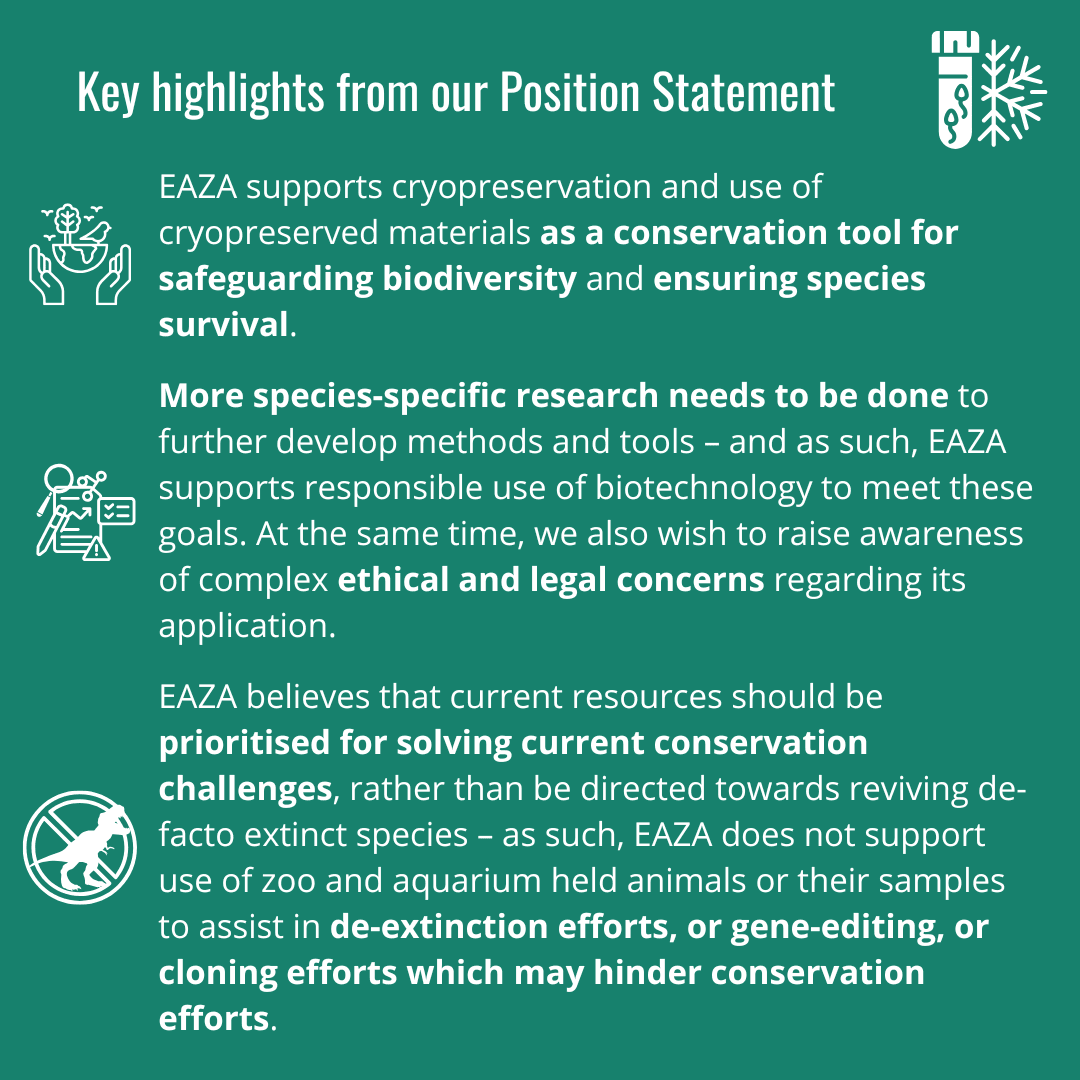Using cryopreservation: yes or no?
EAZA Position Statement on the Use of Cryopreserved Materials and Biotechnology
The EAZA Position Statement on the Use of Cryopreserved Materials and Biotechnology was approved by EAZA Council in October 2024.
Under the umbrella of the EAZA Research Committee, the development of the position statement was championed by the EAZA Biobank Working Group, with direct input from the Cryopreservation Interest Group (CIG) and the EAZA Reproductive Management Group, as well as the EEP-, Conservation-, Veterinary-, National Association- and Executive Committees.


Why a position statement?
The spectacular progress made in molecular and genetic tools and technologies holds significant promise for enhancing wildlife conservation efforts, restoring endangered species populations and managing ecosystems. However, using these technologies, including gene editing and cloning, raises ethical, ecological, and regulatory concerns that must be considered to ensure their responsible use.
The rapidly changing application of biotechnology and the rise of new initiatives developing these tools calls for a clear position statement to guide EAZA Members and species holders, promote transparency and ensure that any participation in such activities is conducted in an ethically responsible and ecologically sound manner to balance development and innovation with achieving conservation goals.
What's in it for EAZA and our Members?
EAZA position statements set out the organisation's current position on a key issue. Whilst non-binding, they are aiming for Members to support this position. The statement provides consistency and cohesion among EAZA Members, reducing conflicts or discrepancies in collaborations with biotechnology initiatives and applications of this technology. This provides a baseline for discussions with potential collaborators and research initiatives.
By establishing a public, transparent framework, the position statement reinforces the commitment of our community to responsible and ethical conservation practices.
Additionally, the position statement serves as an educational tool for staff, stakeholders and the public to raise awareness of potential uses, and limitations, of applied biotechnological tools. It begins to establish understanding of the ethical and regulatory considerations of biotechnological applications to conservation practices, helping Members to make informed decisions and engage with relevant (national, regional and international) stakeholders.
Blog post by Sandrine Camus, 5 November 2024
